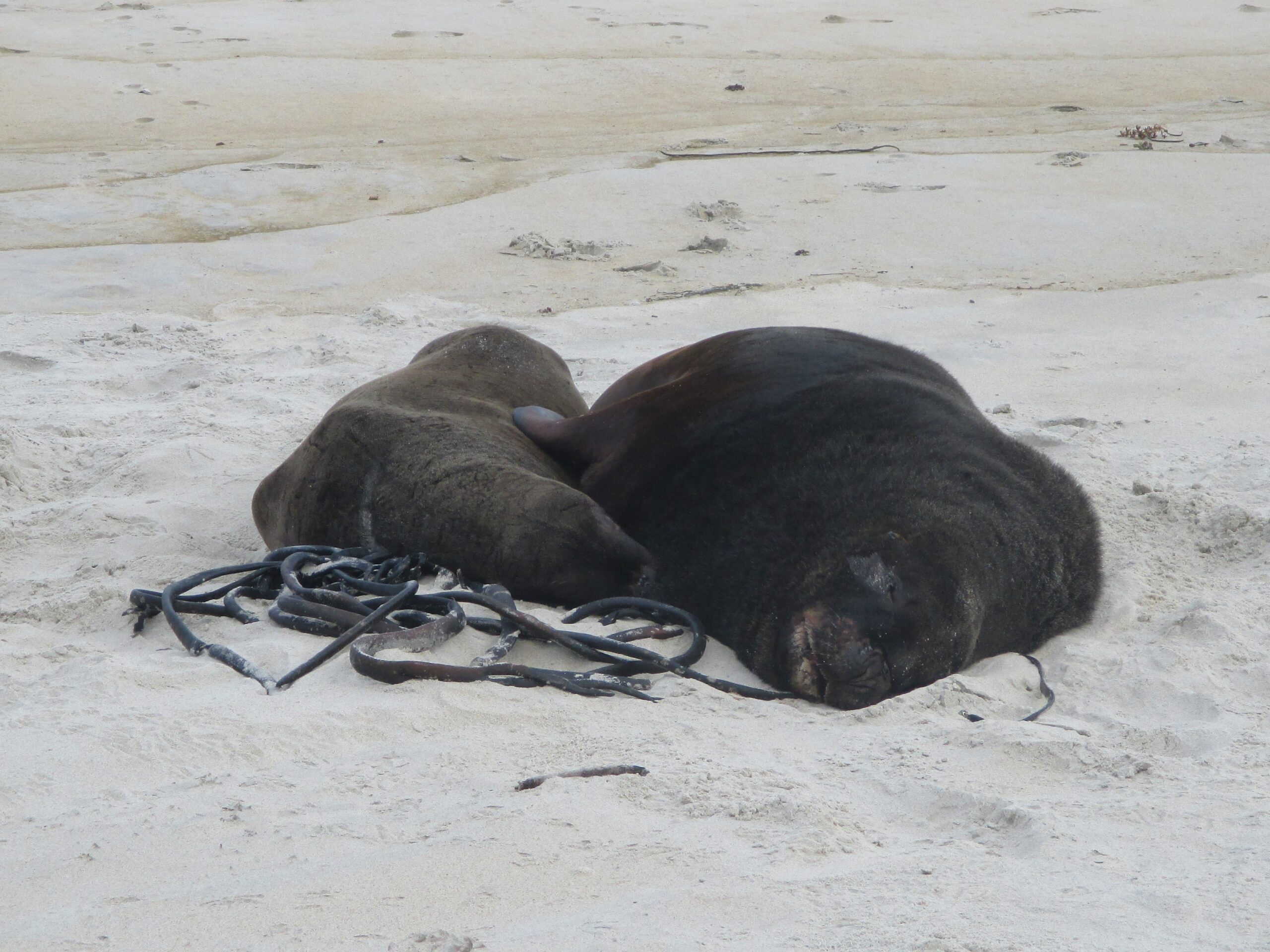Road trip: the South Island of New Zealand
Part three
Moving south again, leaving the great lakes behind, the road forks at Omarama. The eastern route heads back to the coast, and it presented me with more opportunities for wildlife encounters. It was a 90-minute drive to the town of Oamaru, where the Victorian Precinct takes visitors back in time. The preserved colonial architecture is now a collection of shops and food outlets, as well as arts and craft stores.
The main attraction for me here were the penguin colonies. A short walk around the harbour near town takes you to the blue penguin colony. While just out of town at Bushy Beach Reserve is the yellow-eyed penguin colony. You will have to make a choice between the two, as each group of birds come home as sunlight begins to fade.
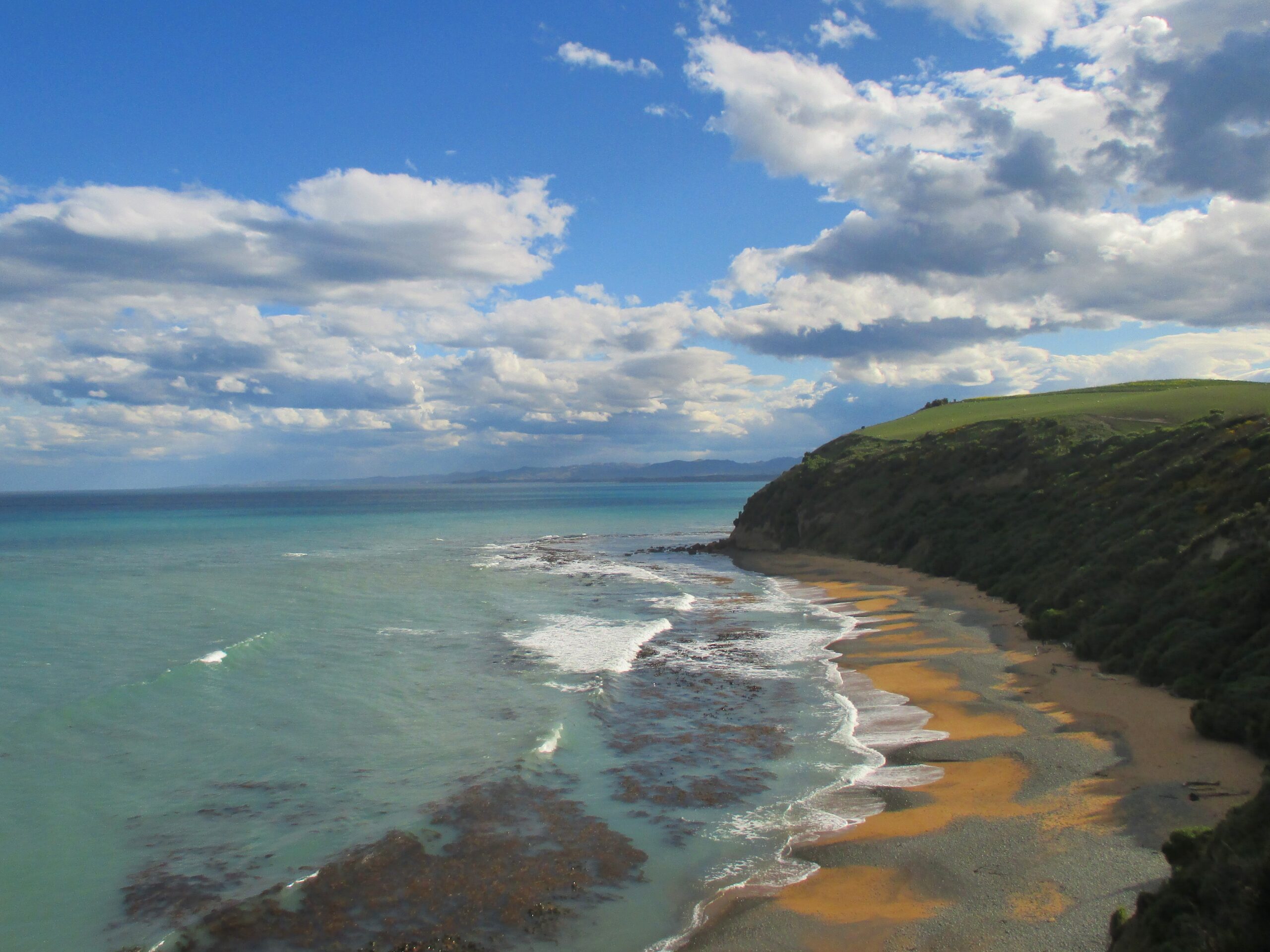
At Bushy Beach, the viewpoint is in the undergrowth, elevated above a secluded beach. I was unsure what to expect, and how long to wait, so it was reassuring to see other people arrive and await the penguins’ homecoming. As the sun began to fade on the horizon, the first penguin swam in from the sea.
Even from a distance, it was remarkable (and hilarious) to see the penguins waddle across the sand. One couple greeted each other on the beach before running off into the bushes. It was only later that I realised the penguins nested in the undergrowth, which offered a closer viewing.
I can’t help contrasting this experience to that in a zoo. Even behind an enclosure, it is possible to see animals in greater detail. Yet, I felt an added satisfaction through witnessing these birds in the wild, despite the sightings being fleeting, and from a distance. To know this is how these creatures have lived and survived for thousands of years, without human interference – it is an indication to me that a natural order has survived intact, despite all the challenges the little penguins must face, and an insight into life in the wild.
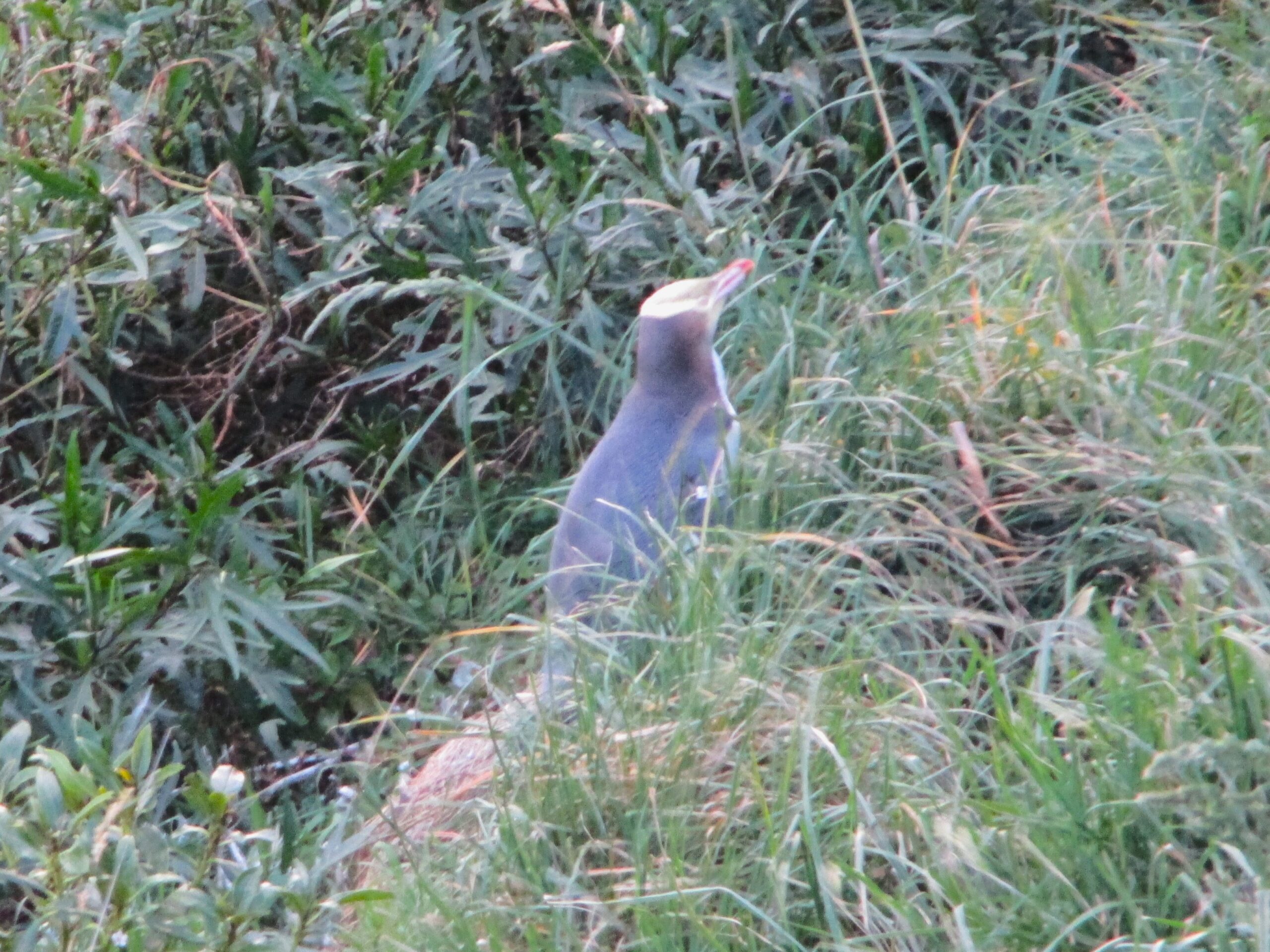
The penguin-watching lasted for around an hour, and then it was back on the road. Between Oamaru and Dunedin is Moeraki, home of the well-known Boulders Beach. It showcases large, smooth, spherical boulders that sit on the sand, near the edge of the water. I can’t exactly explain why I found them so fascinating, but they are fascinating, nonetheless.
On leaving the beach, sunlight had completely gone. And it was around an hour further to Dunedin. On road trips with a lot of distance to cover, I think it’s preferable to forsake time I would normally spend relaxing, to maximise time for more enjoyable activities. Night-time driving, particularly on less scenic stretches of road, is one way of allowing more daytime hours for exploring, in part because there are less cars on the road.

The nighttime drive meant it was a just a short trip into the city the next morning. Dunedin is a lively university town, with plenty to find, including a selection of cafes for a decent cooked breakfast. After a week living in the car, I felt a bit odd walking around a busy urban area – almost out of place.
East of the city is another peninsula, Otago. It is curiously shaped (on a map I think it looks like a witch with a broom, but make your own mind up), formed of volcanic terrain, and with much to see and do. Because of the shape, much of Otago peninsula is close to the sea, and it forms a natural harbour with the mainland.
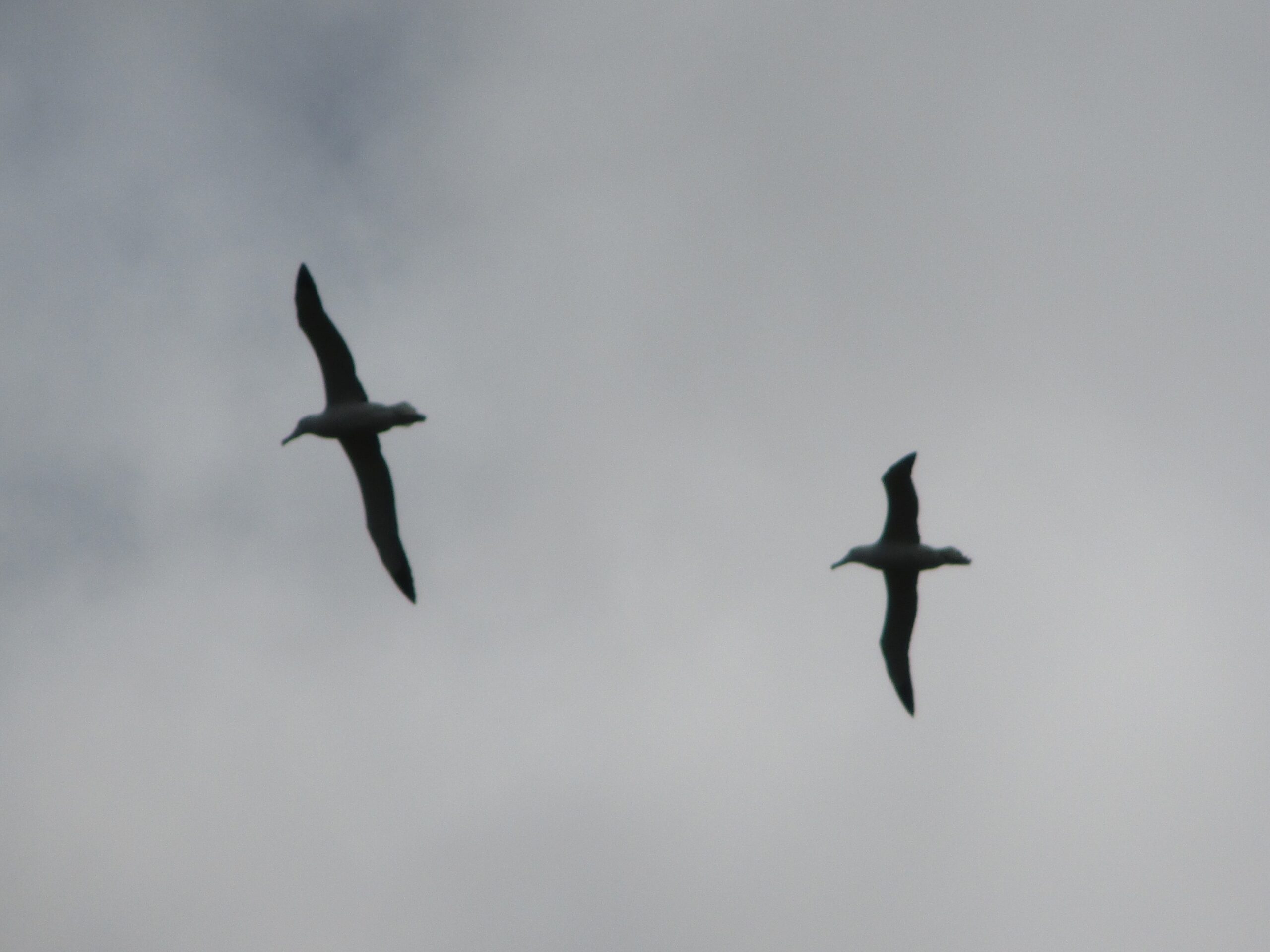
At the tip of the peninsula, the divide between the mainland narrows at Taiaroa Head. Located there is the Albatross Centre. Arriving here was the start of a full day’s worth of wildlife encounters, first up was the bird with the largest wingspan in the world – the albatross. While it is possible to pay to see the albatross up close in their nests, at the Albatross Centre, you can also watch them for free as they fly in the sky above. When contrasted against other seabirds, the albatross look like true giants of the sky, dwarfing the gulls next to them.
I then had a very unexpected meeting on the shore nearby. Lying on the rocks was a rather mean-looking seal, that didn’t look very impressed by my presence, even as I stood more than ten metres away. I later discovered it was a leopard seal, which are often seen around Antarctica. These beasts of the sea are known to eat penguins, as well as other seals. It didn’t look in the mood to be disturbed.
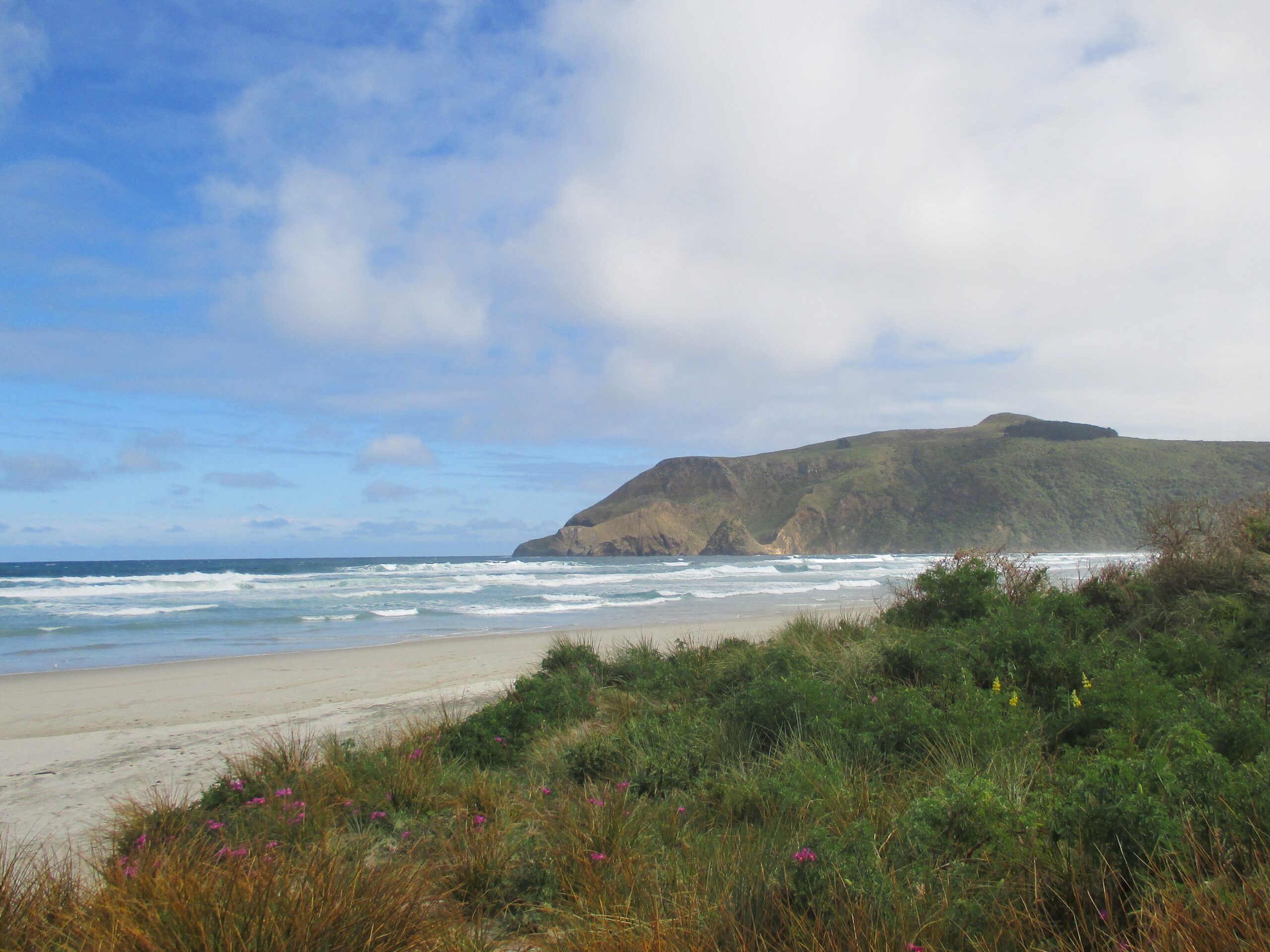

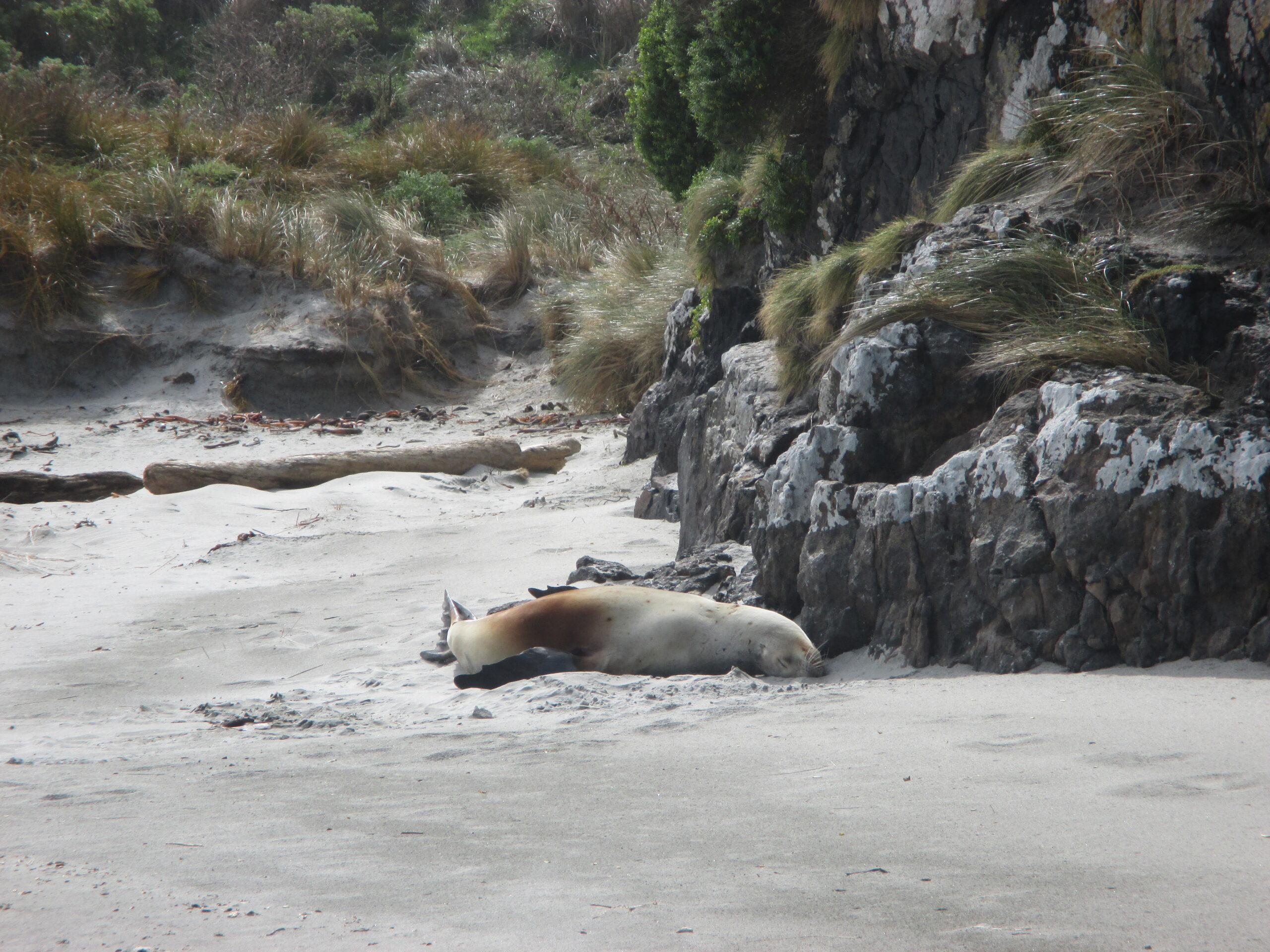
Over on Allan’s Beach, reached by driving over a narrow strip of land between two inlets, is a resting place for yet another species of pinnipeds: sea lions. Strolling along this pleasantly deserted beach led to the sighting of a Hooker’s (New Zealand) Sea Lion – it was a relatively small female, totally alone, sleeping soundly under a cliff.
Sandfly Beach was my final stop on this tour of Otago Peninsula. It is a wide bay, enclosed by extensive sand dunes. The car park sits above the bay, providing a scenic lookout to the beach below. Getting to the beach required a fun scramble down to the sand, but it might be challenging for some. Waiting for me on the beach, rather than sandflies as the name suggests, were many large sea lions. These huge males took no notice of me as I walked by, so long as I gave them the recommended space of around ten metres, and I could just how big they were.
Reflecting on this day, I recognise the good luck I had. Aside from a numerous variety of bird species, New Zealand isn’t generally known for its wildlife. Its only native species on land are birds, most of which have been eaten by invasive animals. It is blessed for its marine life, however, and on a single day across a small strip of land, Otago Peninsula, I was gifted with a great exhibition of New Zealand’s wildlife.

